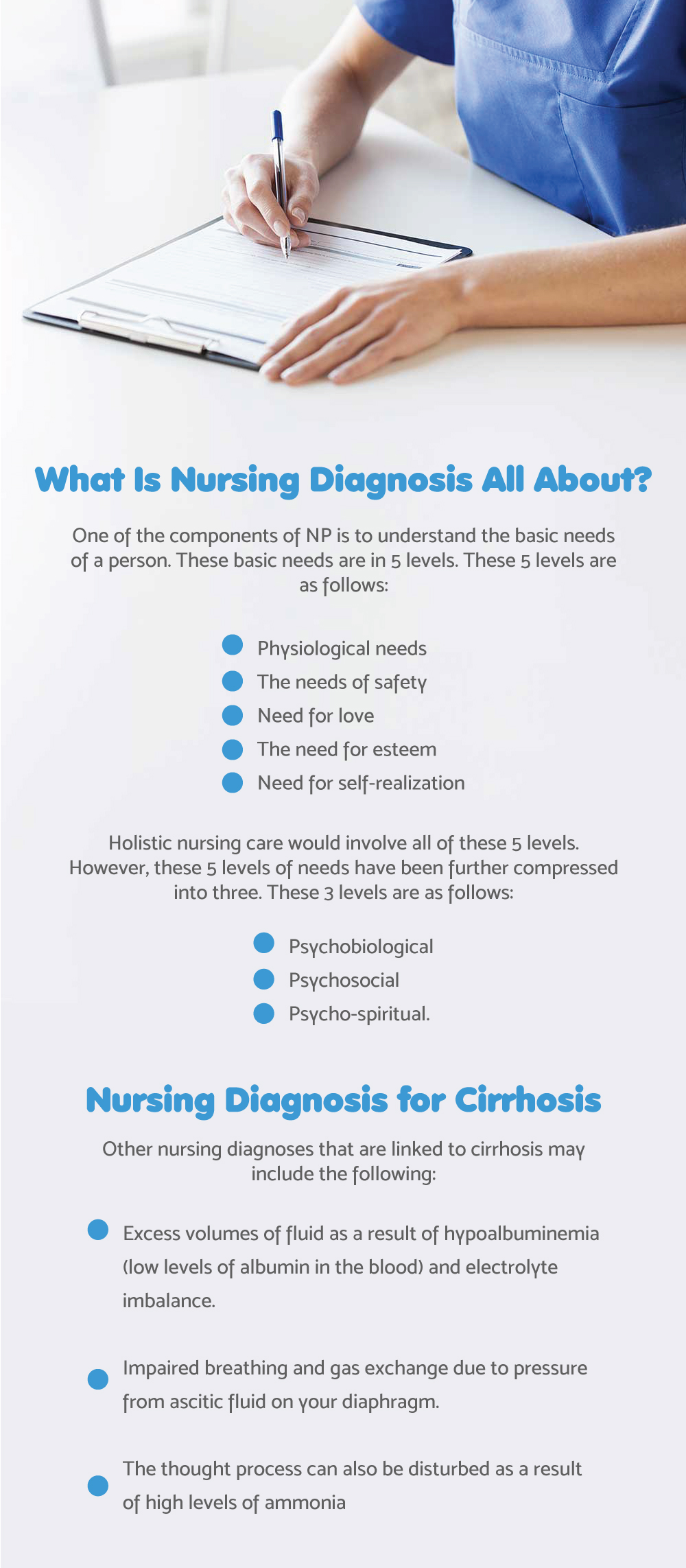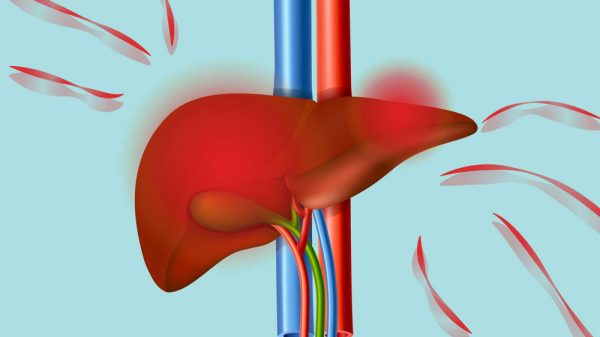Cirrhosis is the most rampant reason why people have chronic liver disease, especially in first world countries. In the U.S for instance, over 400,000 people would end up in the hospital every year because of liver cirrhosis. More so, it accounts for about 27,000 deaths every year. Liver cirrhosis is one of the leading causes of death in Taiwan. World over, cirrhosis is a health condition with high risks and dangerous complications. As such, giving nursing care to people with cirrhosis is usually quite challenging when they are on hospital admission. That is why it is important to understand the nursing diagnosis for cirrhosis.
Liver cirrhosis usually evolves and the condition can deteriorate quite rapidly. That is why nurses need to observe and check on cirrhosis patients constantly. As they observe new symptoms and possible complications, nurses must make quick decisions as regards their care. This will reduce the need for hospital readmission after they discharge you from the hospital. Currently, 70 percent of those with cirrhosis return to the hospital for another admission. We agree that making clinical decisions can be quite complex sometimes, but then, the faster nurses make the right decisions, the better the outcome of the patient would be. Identifying nursing diagnoses and making prompt clinical decisions would help to manage symptoms and complications better. This would, in turn, reduce risks for decompensation and liver failure.
What Is Nursing Diagnosis All About?
If you have liver cirrhosis, your state of health would change quite constantly. This would require your nurse to make rapid and assertive decisions with each symptom that comes up.
You should understand that nurses usually work with evidence. How competent a nurse would be in giving care would depend on how well he or she understands the nursing diagnosis. If the nurse does, he or she would be able to give safe and quality care.
Nurses usually work with the standard Nursing Process (NP) as the framework for their practice in giving care for those with cirrhosis, as well as other chronic health conditions. If the nurse does not apply NP, he or she would not be able to give standard care.
One of the components of NP is to understand the basic needs of a person. These basic needs are in 5 levels. These 5 levels are as follows:
- Physiological needs
- The needs of safety
- Need for love
- The need for esteem
- Need for self-realization
Holistic nursing care would involve all of these 5 levels. However, these 5 levels of needs have been further compressed into three. These 3 levels are as follows:
- Psychobiological
- Psychosocial
- Psycho-spiritual.
Both models meet the same needs, and they help nurses to think critically and give you the proper support that you need when you are on hospital admission. They can quickly identify new health problems and develop a clear plan to give you quality care.
Nursing diagnoses are therefore very necessary in the nursing process. The nurse would take note of changes in your health status, analyze them well by clinical reasoning, and decide the necessary interventions. These would contribute to the overall quality of care that you would receive.
Proper nursing diagnosis coupled with adequate intervention would boost your safety. It would also reduce the chances of readmission, as well as the risks of further complications, decompensation, and liver failure.
Nursing Diagnosis for Cirrhosis
Malnutrition is a very common problem for those with liver cirrhosis. About 20 to 90 percent of those with cirrhosis have this challenge. This alone is a risk factor on its own for further health complications and death. Several deadly complications can arise from malnutrition.
If you have cirrhosis and you can no longer meet your nutrient needs, your doctor may recommend that they insert you with a feeding tube. This is to make sure you get enough nutrients daily.
However, having a feeding tube itself has some adverse effects and health risks. So your nurses would need to constantly observe and monitor you fir these adverse effects.
Form the use of feeding tubes alone, you may develop complications related to bleeding. This could be because of thrombocytopenia, esophageal varices, or coagulopathy.
If any of these occur, the nurses must be able to detect them on time. A timely and accurate nursing diagnosis when there is a complication is very vital. So also is correct treatment and safe management.
Malnutrition: What Are The Risks?
Look at the risks of malnutrition alone. They include low protein levels and weight loss. To prevent this, you may need to use a feeding tube.
Now, add the risk of bleeding that comes with the use of feeding tubes. Then think of all other complications that may arise as a result of bleeding. You see that nursing diagnosis and prompt intervention are very vital.
Other nursing diagnoses that are linked to cirrhosis may include the following:
- Excess volumes of fluid as a result of hypoalbuminemia (low levels of albumin in the blood) and electrolyte imbalance. This often leads to peripheral edema and ascites.
- Impaired breathing and gas exchange due to pressure from ascitic fluid on your diaphragm. This may result in tachypnea (shortness of breath) as well as a decrease in oxygen saturation
- The thought process can also be disturbed as a result of high levels of ammonia. This often leads to lethargy
These are just a few of the many complications that may arise from cirrhosis.
Conclusion
If you are on hospital admission due to cirrhosis, you need competent nurses. They must be able to identify new symptoms and either proffer a solution or keep it under control. It may be a complex process, but qualified nurses are well-trained to handle it.
Nursing diagnosis for liver cirrhosis includes risk for malnutrition, feeding problems, infections, and fluid imbalances. These are only a few as there are many more that we may not be able to cover.
If your nurses can rightly identify the nursing diagnosis for cirrhosis as new symptoms show up, they would be able to focus their care on areas where it is needed. As such, the disease would not be able to evolve into a more complex health problem with dangerous complications.
























